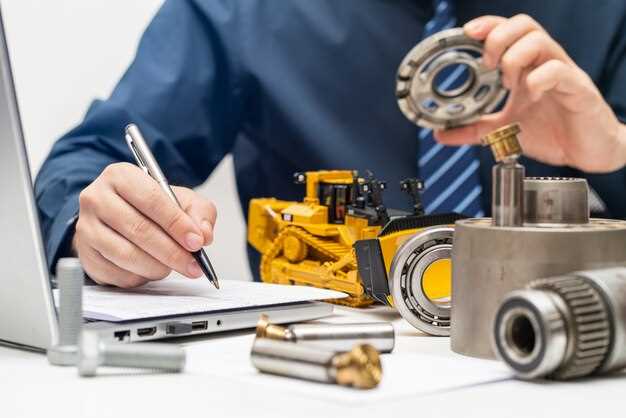
Maintaining the performance and longevity of high-performance gearboxes is crucial for optimal operation. Regular service is essential to prevent costly breakdowns and ensure reliable functionality. One of the key aspects of gearbox maintenance involves the change of oil. Using the right type and grade of gear oil can significantly impact the efficiency and lifespan of the gearbox.
Over time, the oil inside a gearbox can degrade, losing its ability to lubricate effectively. This degradation can lead to increased friction and wear on vital components. Therefore, regular oil changes, as part of a comprehensive maintenance schedule, are vital. It’s important to monitor oil quality and change it based on both time intervals and operational conditions, such as load and temperature.
In addition to oil changes, a thorough gearbox service should include checks on seals, gaskets, and other components. Preventative maintenance techniques, such as vibration analysis and thermal imaging, can also help identify potential issues before they become serious problems. Following these tips and techniques will ensure your high-performance gearbox operates at its best for years to come.
Understanding Gearbox Components and Their Functions
Gearboxes are crucial components in various machinery, playing a significant role in transmitting power and adjusting speed and torque. Understanding the individual components of a gearbox is essential for effective maintenance and service.
The primary components of a gearbox include gears, shafts, bearings, and housing. Gears are responsible for adjusting the output speed and torque based on the input from the engine or motor. They work by meshing with other gears, either increasing or decreasing rotation speed. The configuration of these gears determines the overall gear ratio, which is essential for the performance of the machinery.
Shafts connect the gears and transmit power from one gear to another. They must be robust and accurately aligned to ensure efficient operation. Any misalignment can lead to increased wear and tear, reducing the lifespan of the gearbox.
Bearing supports the rotating shafts and reduces friction during operation. Proper lubrication is vital for bearings to function effectively. Regular oil changes are crucial to remove contaminants and maintain optimal performance. A lack of sufficient oil can lead to overheating and premature failure.
The housing protects internal components from dust, dirt, and moisture while also providing structural integrity. It ensures that the gearbox operates in a controlled environment, preventing external factors from affecting its performance.
Regular service is necessary to maintain gearbox efficiency. This includes routine inspections of components and the oil quality. Oil change intervals depend on specific equipment requirements, but it is generally advised to follow the manufacturer’s guidelines. Using the right type of oil, suitable for the gearbox design, is crucial for protecting gears and bearings from wear.
In summary, understanding gearbox components and their functions helps in proper maintenance. Regular service and timely oil changes are fundamental practices to ensure long-lasting performance and reliability in any machinery.
Signs Indicating the Need for Oil Change
Regular oil changes are crucial for maintaining the performance and longevity of your gearbox. There are several signs that suggest it is time to replace the oil in your gearbox service. Recognizing these signs early can prevent significant damage and costly repairs.
| Signs | Description |
|---|---|
| Unusual Noises | If you hear grinding, whining, or clunking sounds, it may indicate inadequate lubrication due to old or contaminated oil. |
| Overheating | Excessive heat can be a result of degraded oil that is unable to effectively dissipate heat from the gearbox components. |
| Oil Color and Consistency | Dark, murky, or gritty oil is a sign of contamination. Fresh oil should appear clear and have a consistent viscosity. |
| Decrease in Performance | A drop in shifting quality or an overall decrease in gearbox performance can be an indication that the oil needs changing. |
| Fluid Leaks | If you notice oil spots or puddles under your vehicle, it may suggest a leak or that the oil is old and not providing proper sealing. |
By being aware of these signs, you can ensure timely oil changes, which is vital for the efficient operation of your gearbox and overall vehicle performance. Regular monitoring and scheduled service will help maintain optimal functioning and extend the life of the gearbox.
Step-by-Step Guide to Performing an Oil Change
Changing the oil in your high-performance gearbox is essential for maintaining optimal functioning and prolonging its lifespan. Follow these steps to ensure a successful oil change service.
Step 1: Gather Necessary Tools and Materials
Before starting, make sure you have all the required tools and materials: a new oil filter, high-quality gearbox oil, an oil drain pan, a socket set, a wrench, and a funnel. Personal protective equipment such as gloves and safety goggles is also recommended.
Step 2: Prepare the Vehicle
Park the vehicle on a flat surface and engage the parking brake. It is advisable to let the gearbox cool down to avoid burns when handling the components. If possible, elevate the vehicle using jack stands for better access to the gearbox.
Step 3: Drain the Old Oil
Locate the oil drain plug on the gearbox. Place the oil drain pan underneath the plug and use the appropriate socket to remove it. Allow the old oil to fully drain into the pan. Be cautious as the oil may still be warm.
Step 4: Replace the Oil Filter
Locate the oil filter and remove it using an oil filter wrench. Before installing the new filter, apply a small amount of new oil to the rubber gasket to ensure a proper seal. Screw the new oil filter into place securely.
Step 5: Add New Oil
With the drain plug securely back in place, remove the oil fill cap on top of the gearbox. Using a funnel, pour the recommended type and amount of new oil into the gearbox. Refer to your vehicle’s manual for specific requirements.
Step 6: Check the Oil Level
After adding the oil, replace the fill cap and start the vehicle to allow the new oil to circulate. Let it run for a minute, then turn it off and wait a moment. Check the oil level using the dipstick and add more oil if necessary to reach the proper level.
Step 7: Dispose of Old Oil Properly
After completing the oil change, it’s important to dispose of the old oil and filter responsibly. Take them to a recycling center or an authorized disposal location. Do not pour old oil down the drain or in the trash.
Following these steps diligently will ensure your gearbox runs smoothly and remains in peak condition for a long time. Regular oil changes are crucial for high-performance machinery maintenance.
Common Gearbox Issues and Troubleshooting Techniques
Effective maintenance of high-performance gearboxes requires knowledge of common issues and the ability to troubleshoot them promptly. Here are several frequent gearbox problems and suggested techniques for addressing them:
-
Gear Slippage:
Gear slippage can occur due to worn gears or inadequate lubrication. Here’s how to troubleshoot:
- Inspect the gearbox for any signs of wear or damage on the gears.
- Check lubrication levels and change lubricant if it is contaminated or below recommended levels.
- Adjust or replace any worn components to ensure proper engagement.
-
Overheating:
Excess heat can damage gearbox components and lead to failure. To mitigate overheating:
- Ensure that the cooling system is functioning correctly.
- Regularly change the oil to prevent buildup of contaminants.
- Inspect seals for leaks and replace them as necessary to maintain proper lubrication.
-
Noisy Operation:
Unusual noises can indicate problems within the gearbox. Troubleshoot noisy operation by:
- Listening for specific sounds–grinding, whining, or clunking–indicating different issues.
- Checking gear alignment and adjusting if necessary.
- Replacing gears with signs of significant wear or damage.
-
Vibration:
Excessive vibration may result from misalignment or imbalance. To address this:
- Examine the output and input shafts for straightness and alignment.
- Ensure all mounting hardware is tight and secure.
- Balance the gearbox if rotating components are found to be unbalanced.
-
Oil Leaks:
Leaking oil can lead to insufficient lubrication and eventual failure. Address oil leaks by:
- Inspecting seals and gaskets for wear and replacing them as needed.
- Checking for cracks in the gearbox housing.
- Ensuring that all fittings and connections are secure.
Regular service and timely changes to oil, filters, and worn components are crucial for prolonging gearbox life and performance. Understanding these common issues and troubleshooting techniques will help maintain optimal operation of high-performance gearboxes.
Essential Tools for Gearbox Service and Maintenance

Maintaining a high-performance gearbox requires a specific set of tools that facilitate effective service and ensure longevity. Understanding which tools to utilize can significantly impact the efficiency of your gearbox maintenance routine.
Firstly, a high-quality set of wrenches is crucial. These allow you to securely fasten or loosen various components during service. Both metric and imperial sizes should be included in your toolkit to accommodate different gearboxes.
A torque wrench is another essential instrument. It ensures that bolts are tightened to the manufacturer’s specifications, preventing potential damage caused by over-tightening or loosening during operation. This tool is vital, especially during lubrication changes or when replacing gearbox parts.
Oil filters and a filter wrench are necessary for fluid maintenance tasks. Replacing gearbox oil regularly helps maintain optimal performance. The filter wrench enables easy removal of filters, ensuring a clean and efficient oil change.
Additionally, a gear oil pump can simplify the process of filling the gearbox with new lubricant. It minimizes spills and allows for precise fluid transfer, which is especially important for minimizing contamination during service.
A magnetic oil drain plug can also be a beneficial addition. It helps collect metal shavings and debris from the gearbox oil, providing insights into the wear and tear of internal components during maintenance checks.
Finally, a comprehensive toolkit should include cleaning rags and fluid catchers. Keeping the workspace clean is essential to prevent contamination during gearbox service, making these items indispensable.
In summary, having the right tools at your disposal is key for effective gearbox service and maintenance. This preparation will streamline the process and enhance the overall performance and reliability of the gearbox.
Creating a Regular Maintenance Schedule for Gearboxes

Establishing a consistent maintenance schedule for gearboxes is essential for ensuring optimal performance and longevity. One of the primary components of this schedule involves frequent oil changes, which are crucial for reducing friction and wear within the gearbox.
1. Determine Operating Conditions: The first step in creating a maintenance schedule is assessing the operating conditions of the gearbox. Factors such as load, speed, and environmental conditions can significantly impact how often maintenance should be performed. For instance, gearboxes operating under heavy loads or in harsh environments may require more frequent servicing.
2. Set Oil Change Intervals: Based on the analysis of operating conditions, establish specific intervals for oil changes. Generally, a good practice is to change the oil every 1,000 to 1,500 operating hours or according to the manufacturer’s recommendations. Regularly changing the oil helps to remove contaminants and maintain the lubricating properties essential for gearbox functionality.
3. Monitor Oil Condition: Utilize oil analysis to determine the condition of the lubricant. Testing can identify wear particles, moisture, and other contaminants that may affect gearbox performance. Adjust your oil change schedule accordingly based on the results of these analyses.
4. Document and Review Maintenance Records: Keep detailed records of all maintenance activities, including oil changes and service dates. Regularly reviewing these records can help identify trends and spot potential issues before they escalate, allowing for proactive maintenance adjustments.
5. Train Personnel: Ensure that all personnel involved in the maintenance of gearboxes are adequately trained. Understanding the importance of following the maintenance schedule and the proper techniques for oil changes and servicing is critical to successful operations.
6. Consider Seasonal Adjustments: Depending on the environment, it might be beneficial to adjust the maintenance schedule seasonally. For example, during extreme weather conditions, more frequent checks and oil changes may be necessary to ensure that the gearbox operates smoothly.
By following these steps to create a regular maintenance schedule, companies can enhance gearbox reliability and reduce the risk of unexpected failures, ultimately saving time and resources in the long run.
